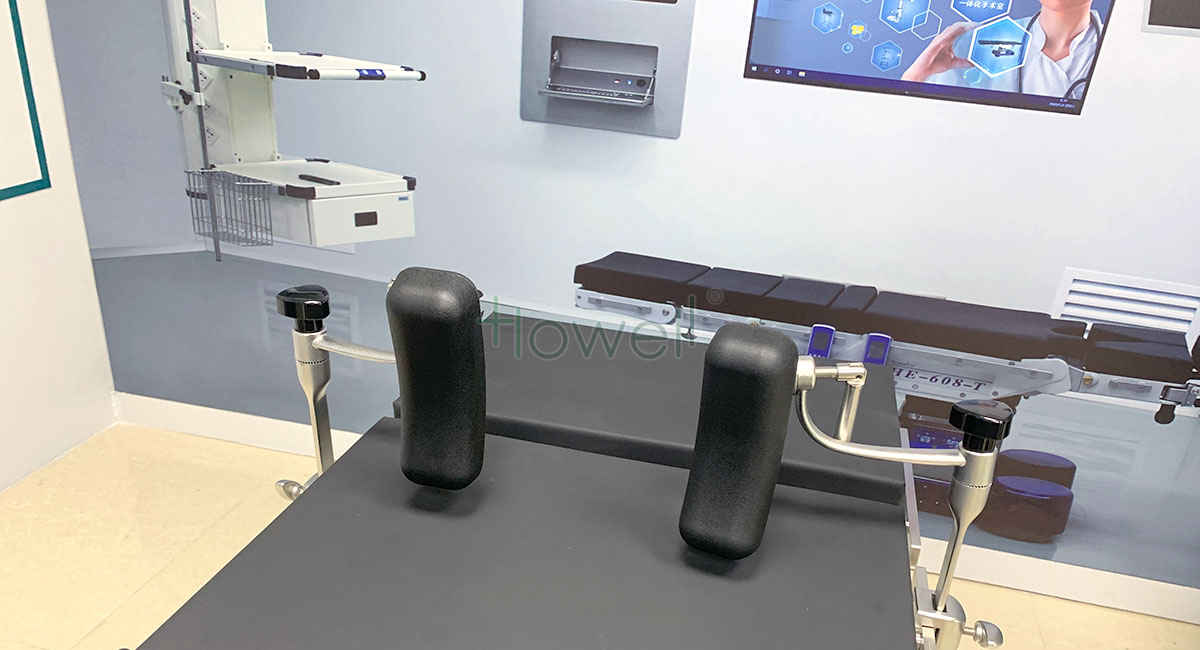The Trendelenburg position is a position for a patient on the operating table, most commonly used during lower abdominal surgeries and central venous catheter placement. In Trendelenburg position, the patient is supine on the table with their head declined below their feet at an angle of roughly 16°. The degree of Trendelenburg should be minimized as much as possible, and if possible, the patient should be repositioned into the supine or reverse Trendelenburg position at established intervals. Due to the angle, the Trendelenburg position allows for the patient’s abdominal organ to move towards the head by the use of gravity, improving surgical access to the pelvic organs.
In steep Trendelenburg position, the patient is angled at 30–40 degrees in the head-down position. This version of Trendelenburg is most often used for robotic pelvic procedures. Risks associated with steep Trendelenburg position include altered pulmonary function, airway edema, increased intracranial and intraocular pressure, and nerve injury.
WHEN WOULD YOU PUT A PATIENT IN THE TRENDELENBURG POSITION?
Trendelenburg position is typically used for lower abdominal surgeries including colorectal, gynecological, and genitourinary procedures as well as central venous catheter placement.
Clinical recommendations for repositioning patients – Steep Trendelenburg patient position present risk for intraoperative injury. Injury prevention begins with awareness. Several mitigations can be deployed including; anesthesia administered crystalloids to reduce the risk for neural edema, surgeons should use the least amount of pneumoperitoneum needed for the surgery, and using the least amount of Trendelenburg needed for the procedure. The nursing team should monitor the patient position. Second timeouts involving checking patient positioning and making adjustments based on the patient physiological and physical status have been proposed for cases taking longer than 4 hours. It is standard for the nursing staff to check the safety of patient position during the case every hour when feasible. Introducing pauses for positioning checks and relieving Trendelenburg for even brief periods of time can reduce the risk for the most common injuries sustained while patients are in this position.
TRENDELENBURG POSITION VS. REVERSE TRENDELENBURG POSITION
A modified version of Trendelenburg, Reverse Trendelenburg position is used for laparoscopic surgeries including gallbladder, biliary tract, and stomach procedures, as well as head and neck surgeries. In Trendelenburg, the patient’s head is positioned down, and feet positioned up. In Reverse Trendelenburg, their head is up, and feet are positioned down.
CONCLUSION
Positioning a patient for a surgical procedure involves reducing risk of injury and increasing comfort. The Trendelenburg position allows a surgeon greater access to pelvic organs, helpful for procedures like colorectal, gynecological, and genitourinary surgery. As with all surgical positions, risks must be assessed prior to positioning a patient in Trendelenburg position. For example, risks to a patient while in Trendelenburg include diminished lung capacity, tidal volume and pulmonary compliance, venous pooling toward the patient’s head, and sliding and shearing. Trendelenburg position should be avoided for extremely obese patients.
Trendelenburg Patient Restraint is a comprehensive patient restraint system for safe, easy patient positioning when in Trendelenburg position.
Secures to OR table rails with standard clamps to support patients of all sizes.
specialist secure solution for Trendelenburg Patient Positioning. trendelenburg positioner is compatible with all operating tables

